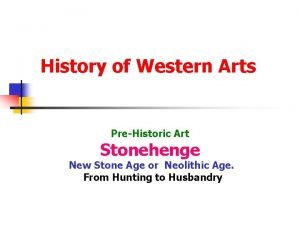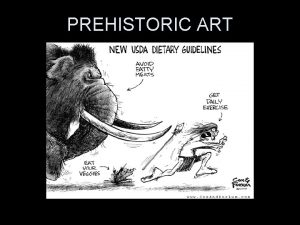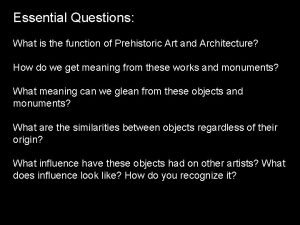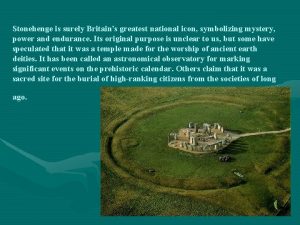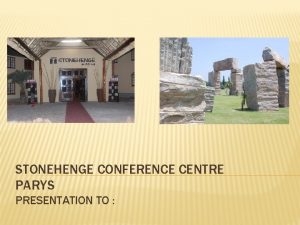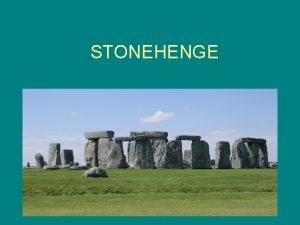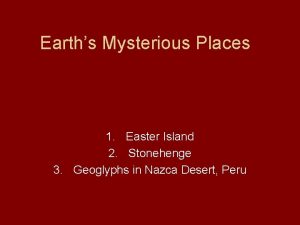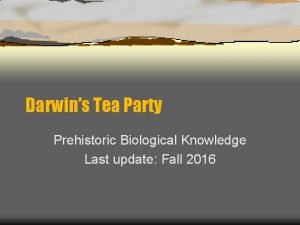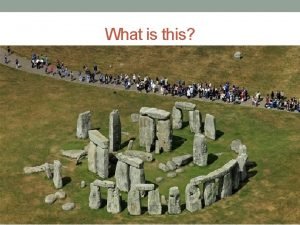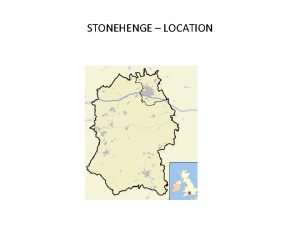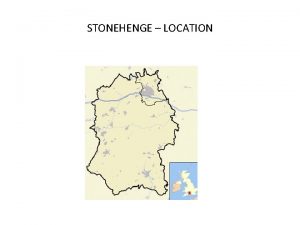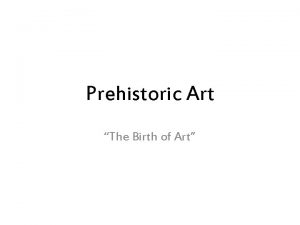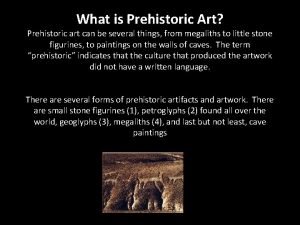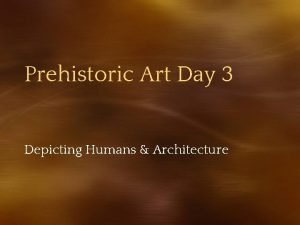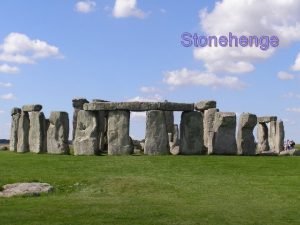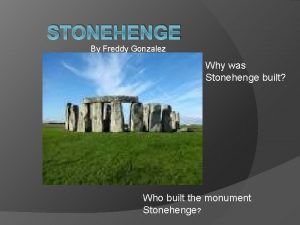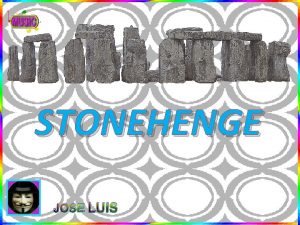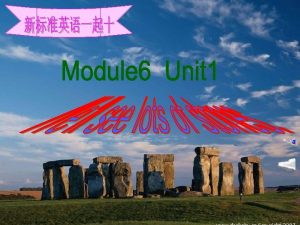History of Western Arts PreHistoric Art Stonehenge New

















- Slides: 17

History of Western Arts Pre-Historic Art Stonehenge New Stone Age or Neolithic Age. From Hunting to Husbandry



Stonehenge n n Introduction: In the Neolithic age men made their first successful attempts to domesticate animals and food grains. It was considered to be one of the truly epochmaking achievements of human history. It was started at first in the Near East sometimes about 8000 B. C.

Stonehenge Paleolithic man had led the unsettled life of the hunter and food gatherer, reaping where nature sowed and thus at the mercy of forces which he could neither understand nor control.

Stonehenge n n New Stone Age or Neolithic: Now, having learned how to assure a food supply by their own efforts, people settled down in permanent village communities; a new discipline and order entered their lives. There is, then, a very basic difference between the New Stone Age, or Neolithic, and the old, or Paleolithic, despite the fact that all still depend on stone as the material of their main tools and weapons.

Stonehenge The new mode of life brought forth a number of important new crafts and inventions long before the earliest appearance of metal: pottery, weaving and spinning, basic methods of architectural construction in wood, brick and stone.

Stonehenge n n Neolithic Europe: Neolithic revolution progressed at a very much slower pace in Europe. About 3000 B. C. , near Eastern influences began to spread to the northern shore of the Mediterranean.

Stonehenge n In Central and Northern Europe a sparse population continued to lead the simple tribal life of small village communities even after the introduction of bronze and iron, until a few hundred years before the birth of Christ

Stonehenge Thus Neolithic Europe never reached the level of social organization that produced the masonry architecture of Jericho or the dense urban community of Catal Huyuk.

Stonehenge Instead we find there monumental stone structures of a different kind, called megalithic because they consist of huge blocks or boulders placed upon each other without mortar.

Stonehenge Their purpose was religious, rather than civic or utilitarian; apparently the sustained and co-ordinated effort they required could be compelled only by the authority of religious faith – a faith that almost literally demanded the moving mountains.

Stonehenge n n n Even today these megalithic monuments have an awe- inspiring, superhuman air about them as if they were the work of a forgotten race of giants. Some, known as dolments, are tombs, “house of the dead” with upright stones for walls and a single giant slab for a roof. Others, the so-called cromlechs, (pre-historic circle of large tall stones) form the setting of religious observance.

Stonehenge n n n Stonehenge: In southern England has a great outer circle of evenly spaced uprights supporting horizontal slabs (lintels) and two inner circles similarly marked, with an altar-like stone at the centre. The entire structure is oriented towards the exact point at which the sun rises on the day of the summer solstice, and therefore it must have served a sun – worshipping ritual

Stonehenge n n The concept of architecture: Whether a monument such as this should be termed architecture is a matter of definition now a days we tend to think architecture in terms of enclosed interiors, yet we also have landscape architects, the designers of gardens, parks, and playgrounds; nor would we want to deny the status of architecture to open-air theaters or sports stadiums.

Stonehenge n n Perhaps we ought to consult the ancient Greeks, who coined the term. To them, “archi-tecture”meant something higher than ordinary “texture” (that is, “construction” or “building”) – much as an archbishop ranks above a bishop or an archfiend above a fiend-a structure distinguished from the merely practical, every day kind by its scale, order, permanence, or solemnity of purpose.

Stonehenge n n n A Greek, therefore, would certainly have acknowledged Stonehenge as architecture. And we, too, shall have no difficulty in doing so once we understand that is not necessary to enclose space in order to define or articulate it. If architecture is “the art of shaping space to human needs and aspirations”, then Stonehenge more than meets the test.
 Stonehenge art history
Stonehenge art history Lascaw 12 ans
Lascaw 12 ans Prehistoric art function
Prehistoric art function Ancient art 1 500 00 bc-2 000bc
Ancient art 1 500 00 bc-2 000bc Creative art grade 8
Creative art grade 8 Stonehenge is britain's greatest national icon
Stonehenge is britain's greatest national icon Stonehenge river lodge
Stonehenge river lodge Characteristics of stonehenge
Characteristics of stonehenge Easter island and stonehenge on opposite sides of the earth
Easter island and stonehenge on opposite sides of the earth Prehistoric era
Prehistoric era The druids may have used stonehenge dgp
The druids may have used stonehenge dgp Trisico
Trisico When was stonehenge built
When was stonehenge built Faragn
Faragn Prehistoric monument dan word
Prehistoric monument dan word Stonehenge tlocrt
Stonehenge tlocrt Prehistoric
Prehistoric Prehistoric era
Prehistoric era
